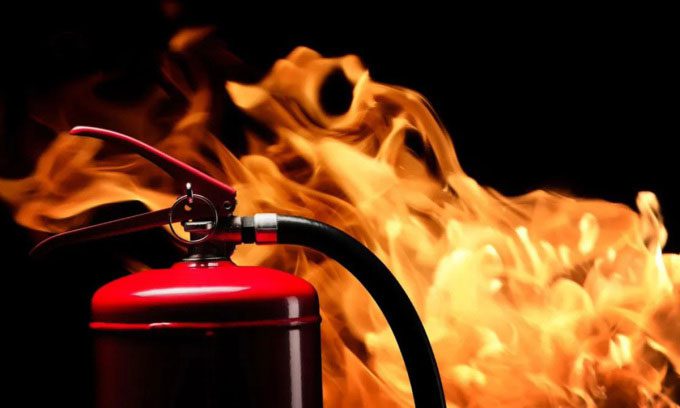A team of engineers at the University of California, Riverside has developed a liquid fuel that only ignites when an electric current passes through it, helping to reduce fire hazards.
The flammability of conventional fuels poses a significant fire risk to this industry. Chemical engineers at the University of California, Riverside have created fire-resistant liquid fuel that minimizes the risk of accidental fire during storage or transportation, as reported by Interesting Engineering on October 4th. The research findings were published in the Journal of the American Chemical Society.

Fire-resistant liquid fuel can help reduce fire risks. (Image: D-Keine/iStock)
The new fuel only ignites when an electric current is applied. “The type of fuel we usually use is not very safe. It evaporates and can ignite easily, and that flame is very hard to extinguish. It would be much simpler if we could control the ignition capability of the fuel and prevent it from burning by removing the voltage,” said Yujie Wang, a chemical engineering graduate student at the University of California, Riverside and co-author of the study.
The new fuel is derived from an ionic solution, a type of liquid salt. “It is similar to the salt we use for seasoning food, sodium chloride. The one we are using for this project has a lower melting point than table salt, lower vapor pressure, and is completely organic,” Wang explained.
To develop this fuel, the research team modified the ionic solution formula by using perchlorate instead of chlorine. They then tested whether the new solution would ignite when exposed to flame from a lighter.
The result was that the fuel did not ignite. “The temperature from a regular lighter is high enough, and if it were going to ignite, it would have done so”, Wang clarified. Typically, flames erupt when flammable fuels turn into gas, in the presence of oxygen at high temperatures.
The research team then assessed the effectiveness of the new fuel with voltage tests, and in this case, it ignited.
“When we cut the current, the flame goes out. We can repeat this process multiple times, applying voltage, seeing smoke rise, igniting the smoke to make it burn, and then turning it off. We are very excited to discover a mechanism that we can start and stop very quickly”, Wang said.
Another interesting point about this improved ionic solution is its ability to blend with conventional fuels while retaining its inherent properties. “But further research is needed to determine how much can be mixed while still maintaining its fire-resistant capability,” shared Michael Zachariah, co-author of the study.
In theory, ionic liquid fuel could be used for various vehicles. However, the fuel is still in its early stages and requires further testing before it can be commercially launched. Most importantly, tests involving various types of engines are needed to evaluate the adaptability of the new fuel and assess its overall effectiveness.


















































